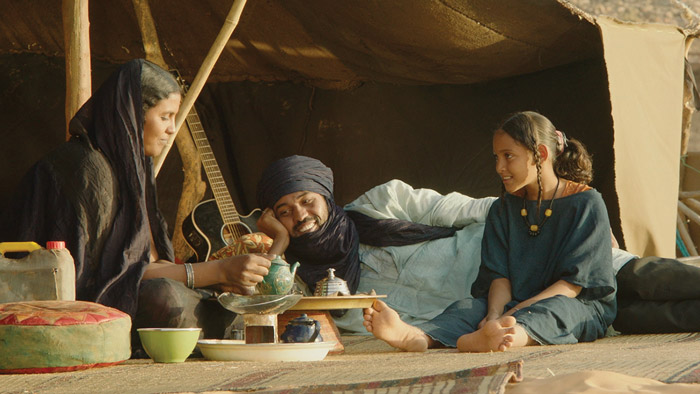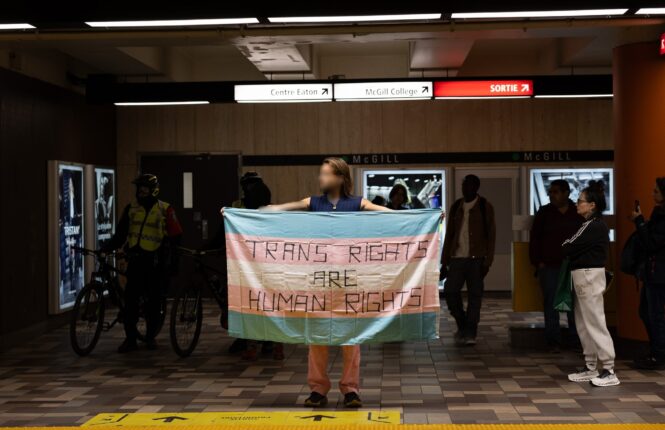In a world where the social fallout from militant and extremist religious groups is often reduced to sound bites and headlines from overseas, it is all too easy for the West to overlook the daily lives of residents in war-torn regions in favour of more glamourized news. In Timbuktu, director Abderrahmane Sissako vividly and harshly illuminates the realities of everyday survival in lands caught in the crossfire of violent Islamist extremism.
Loosely tied together by the story of a local cow herder unsuccessfully trying to avoid conflict, the film cuts sharply and abrasively between the lives of various locals and their experiences under the occupation of militant group Ansar Dine in Western Africa. Each character has a distinctive and tragic personal angle on the crisis—from an unmarried couple caught and executed for fornication to a young woman arrested and violently lashed for nothing more than singing in her own home.
Timbuktu often focuses on the absurdity and contradiction present throughout the radicals’ occupation of the city. Soldiers proclaim through bullhorns that soccer is illegal before arguing about their favourite Champions League teams in an alleyway. Police quietly debate between themselves whether it is right to arrest a group for playing music if they are doing so to praise Allah. A local worshipper chastises a band of foot soldiers for entering a mosque with shoes and guns. These are the small yet revealing dialogues that allow Sissako to, in a small way, humanize the militants, managing to illustrate their naiveté, confusion, and unrelenting barbarism. The film shows a world where it often appears that not even the oppressive forces themselves fully understand their horrific actions, or the rationale for their behaviour.
The lives and determination of the occupied is portrayed more clearly than the villainy and heinousness of the occupying forces. As more and more restrictive laws are put in place, the citizens of Timbuktu react with subtle and careful acts of defiance. This is showcased in what is likely the most visually striking scene in the film: After a man is lashed for playing soccer, he and his teammates continue to play, but with an imaginary ball so that they cannot be punished. It is a bittersweet triumph for the locals in the face of overwhelming tragedy.
The emotional power of the film comes less from what it shows than from what it leaves off camera. In very few cases is violence directly shown on-screen, but when it is, it is sharp and without significant warning. This caustic and shocking approach to the depiction of violence in the town effectively mirrors the unpredictability within such communities. It also allows Timbuktu to avoid the common trope of modern sociopolitical dramas using graphic depictions of violence alone to create emotional tension, relying instead upon plot and setting to do this work. Repeated shots of masked soldiers proclaiming oppressive regulations through megaphones in the streets, in conjunction with the unease caused by the cinematography, created a powerful sense of dread and fear that violent scenes could not.
This omnipresent sense of dread is consistently reflected in the actors’ faces as well. Facial expressions and body language are used far more commonly than verbal communication throughout the film to illustrate the emotional gravity of situations, and are executed with great precision by all members of the cast. Extended scenes with little to no conversation consistently advance the plot in directions that even the most masterfully conceived dialogue would struggle to achieve.
By clearly and tastefully showing the truth of the human experience of life in cities occupied by extremist radicals, Timbuktu provides a new and conscious perspective on an issue of undeniable relevance to the 21st century. It is a raw and emotionally gripping film that avoids clichés and oversimplifications of issues, consistently encouraging viewers to explore and question their understanding of the implications of violent religious fundamentalism as a whole.









